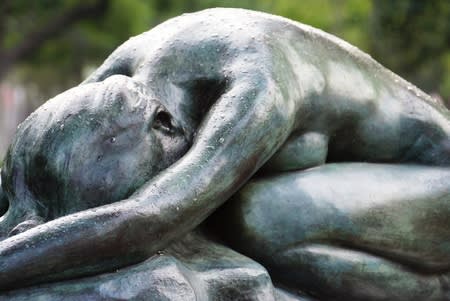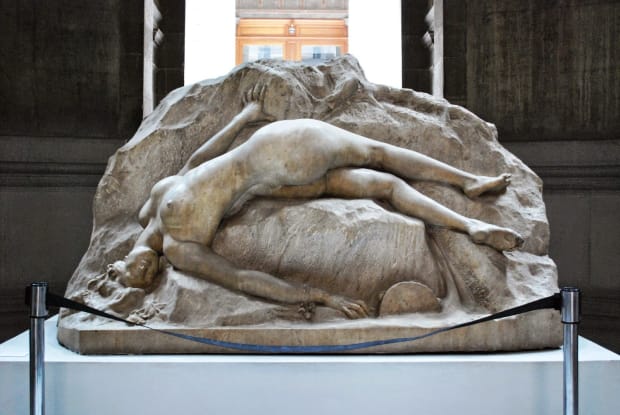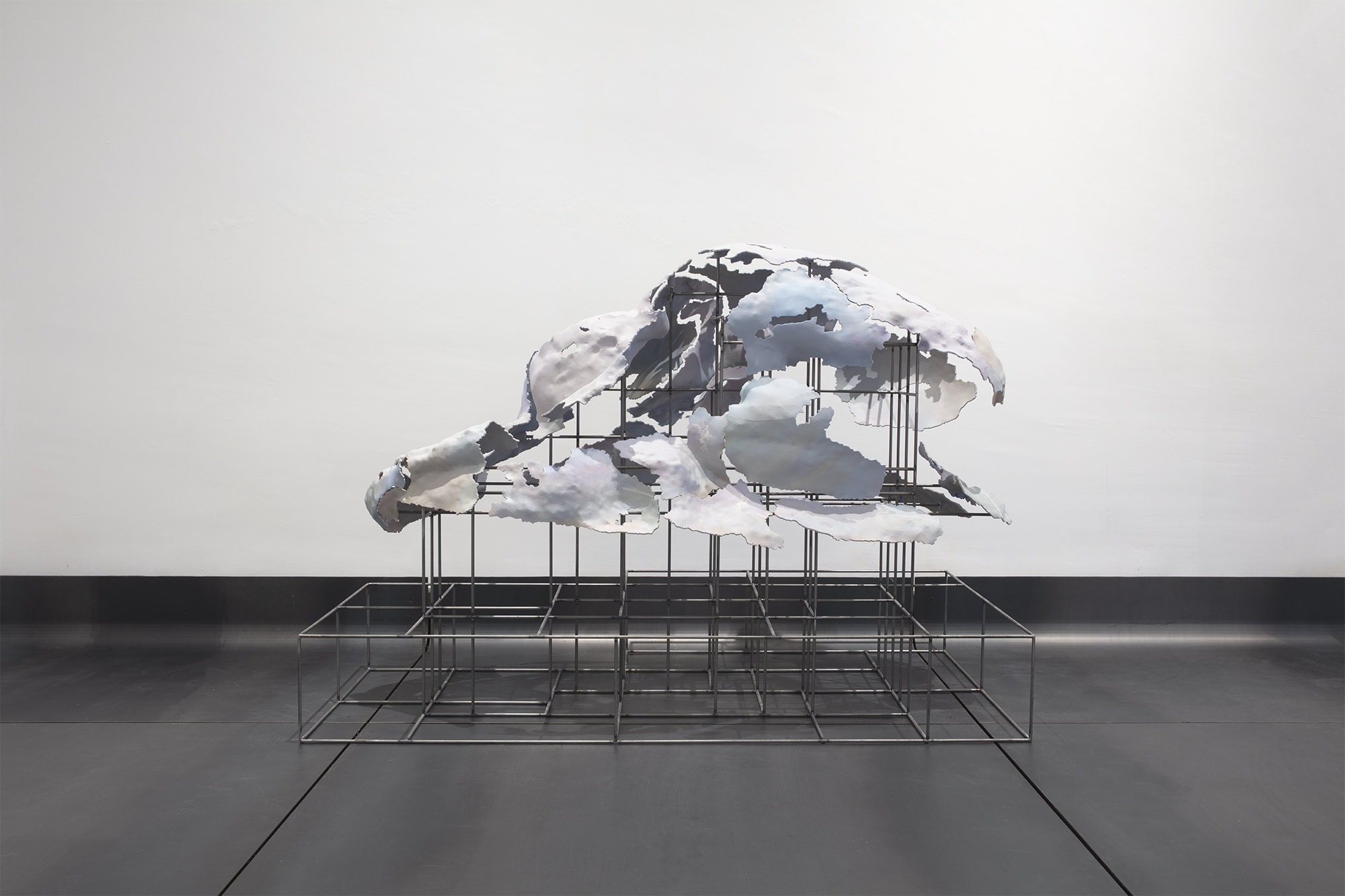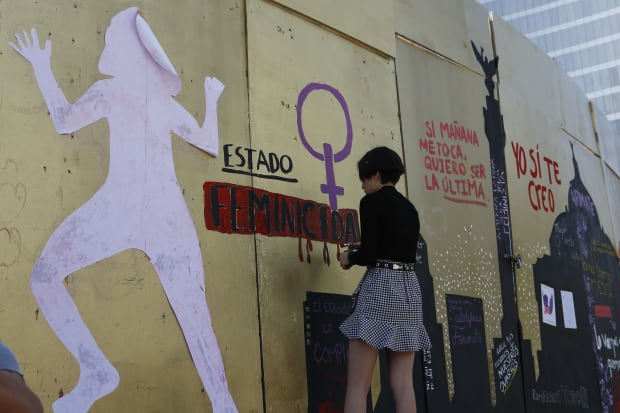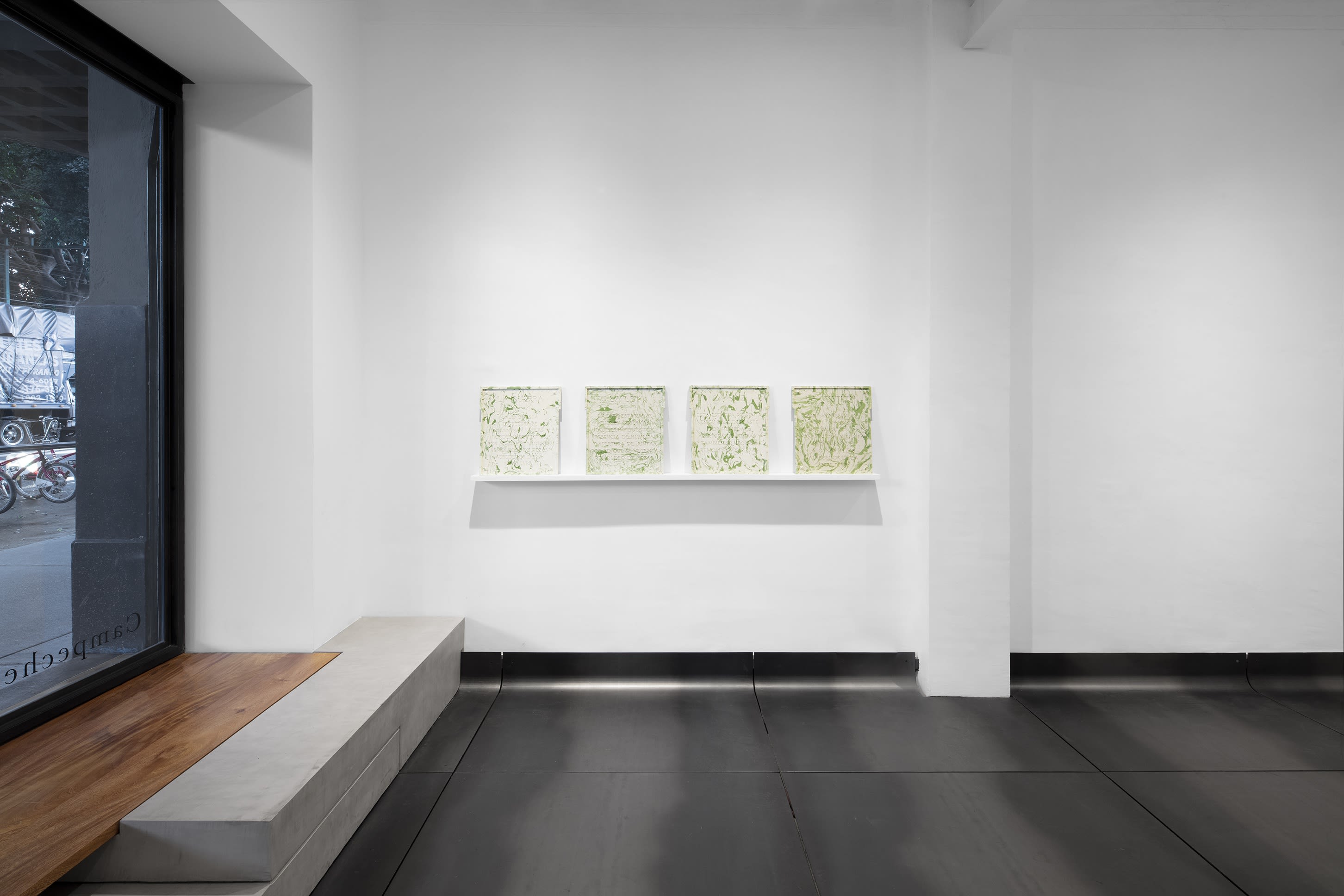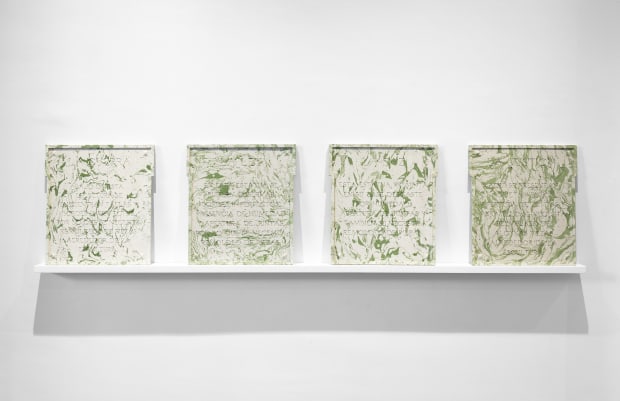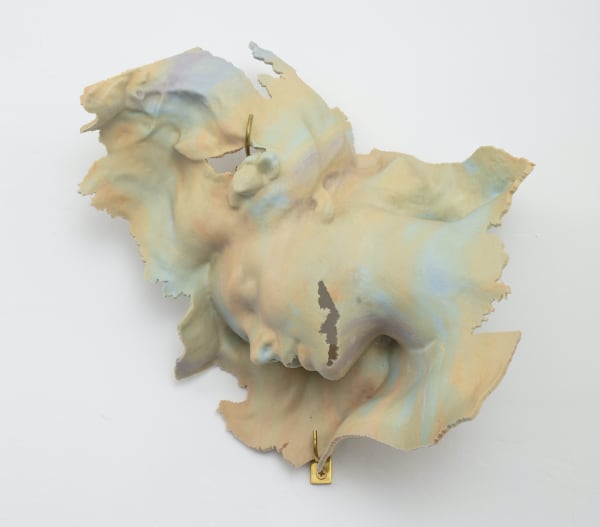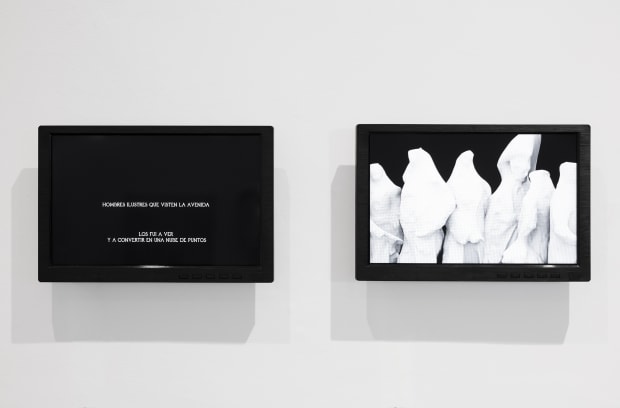-

Revertir el Desgaste, installation view, Campeche, Mexico City. Photo: Ramiro Chaves @whitebalancemx
-
-
Desesperanza
2021,
3D-scanned arsenic, steel
143 x 80 x 95 cm, Edition of 2 + 1 AP (2/2) -
-
-
-
-
-
Hombres Ilustres, 2021Two-channel HD video, 1:52 minEdition of 2 + 2 AP (1/2)
-
Additional resources:
Image credits: Artworks ©2021 Julieta Gil; installation images ©2021 Ramiro Chaves @whitebalancemx


